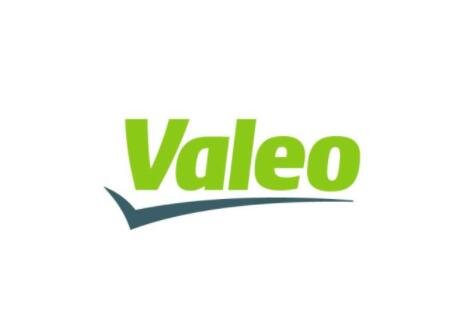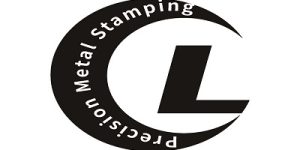Phosphor Bronze Metal Stamping
We provide top-notch phosphor bronze terminal stampings using the latest technology and benefiting from the extensive experience of our team.
- All uploads are secure and confidential.

Phosphor Bronze Metal Stamping
Phosphor bronze is a copper alloy that consists of tin and phosphorus in varying proportions. Including phosphorus gives this alloy superior fluidity in its liquid form, making it easier to cast. Phosphor bronze also boasts excellent mechanical and chemical properties, ensuring that stamped components possess exceptional resistance to wear, fatigue, and corrosion.
Phosphor bronze metal stamping at a glance
| Advantages | outstanding mechanical and chemical properties, and excellent resistance to corrosion, wear, and fatigue |
|---|---|
| Disadvantages | more expensive,lower electrical conductivity |
| Price | $$$-$$$$ |
| Lead time | For the samples, it will take 15 days to make the tooling; for mass production, depending on the quantity and complex, around 10 days to 25 days . |
| Tolerances | ISO2768-M is the standard tolerances |
| Thickness | 0.005-0.3 inch |
| Application | Electrical contacts, springs, bearings,cymbals and bells |
Metal Stamping Process for Phosphor Bronze
The metal process for phosphor bronze typically involves feeding a sheet of the material into a stamping press, where it is held in place by a die. The press then applies force to the die, cutting and shaping the material into the desired form.
Advantages of Phosphor Bronze Stamping
Phosphor bronze stamping boasts several advantages compared to other materials.
Its superior casting fluidity enables the production of intricate designs, and its exceptional mechanical and chemical properties provide excellent resistance to wear, corrosion, and fatigue. These qualities make it a popular choice for stamping components that require durability and strength, such as electrical contacts, springs, and bearings.
By using phosphor bronze stamping, you can ensure that your parts are of the highest quality and will last a long time.

Top Phosphor Bronze Stamping Applications
Over 20 years in metal stamping, Chengli Hardware supplies all kinds of bronze alloys for prototypes, short-run and long-run stamping service used for many industries. Common bronze used for :
- Cables
- Terminals
- Lighting
- Air conditioning components
- Restaurant equipment
- Medical devices
- Transformers
Finishes
Chenli Hardware’s phosphor bronze stamping could be finished in a number of different ways. Below are some of the frequent finishes.
- Electro-nickel plating: a popular surface finishing technique for brass components. This process involves depositing a thin layer of nickel onto the surface of the brass part, which provides increased corrosion resistance, wear resistance, and improved appearance.
- Electroplish: Electropolishing is a method of electrochemical surface finishing that eliminates a small amount of material from a metal component, usually made of stainless steel or copper. This technique results in a bright, polished, and impeccably smooth surface finish.

From Prototyping to Production
Chengli offers a wide variety of production volumes for sheet metal stamping, including:
Prototyping
Chengli offers metal stamping prototyping services for customers who need to test the viability of their product designs before moving into production. This service is ideal for customers who need to quickly iterate and refine their product designs.

Low Volume
For metal stamping projects with quantities up to 10,000 units, Chengli offers low-volume production services. Such service is perfect for customers who need smaller metal stamping orders to bridge the development of a product between prototypes and mass manufacturing, or who are looking for customized products.

High Volume
We can accommodate high volume metal stamping projects with quantities in excess of 10,000 units. Our production facilities are equipped to handle high volume production runs with precision and efficiency, ensuring that our customers receive cost-effective solutions.

Short Run Stamping
Short run stamping is often used for prototyping or for fulfilling small orders,typically ranging from a few hundred to a few thousand units.It is commonly used in industries such as automotive, aerospace, and electronics.

Long Run Stamping
Long run stamping is used for high-volume manufacturing applications where consistent quality, high efficiency, and low cost per part are critical.It often requires specialized equipment, automated production processes, and strict quality control measures to ensure that each part meets the required specifications.

Why Use Chengli's Metal Stamping Services?
Thanks to our highly efficient process, we provide quick, accurate tooling and unmatched short-run and long-run stamping.
Cost Advantage
Our metal stamping services are cost-effective due to our advanced manufacturing processes, efficient production techniques, and experienced engineering team. We are committed to offering competitive pricing without sacrificing quality or delivery times.
Manufacturing Capabilities
Our state-of-the-art facility is equipped with a wide range of high-speed stamping presses and other advanced manufacturing equipment. We have the capability to produce complex parts with tight tolerances, and we offer a variety of secondary operations to complete your parts to your exact specifications.
Quality Assurance
We maintain rigorous quality control standards throughout our entire manufacturing process to ensure that every part we produce meets or exceeds customer requirements. Our quality management system is certified to ISO 9001:2015, and we utilize advanced inspection equipment and techniques to verify the accuracy and consistency of our products.
See What Our Customers Say About Us
See what our satisfied customers have said regarding how we fulfilled their requirements.



Gallery of Phosphor Bronze stamping
We machine low-volume and high-volume production orders for customers in multiple industries: aerospace, automotive, defense, electronics, hardware startups, industrial automation, machinery, manufacturing, medical devices, oil & gas and robotics.



